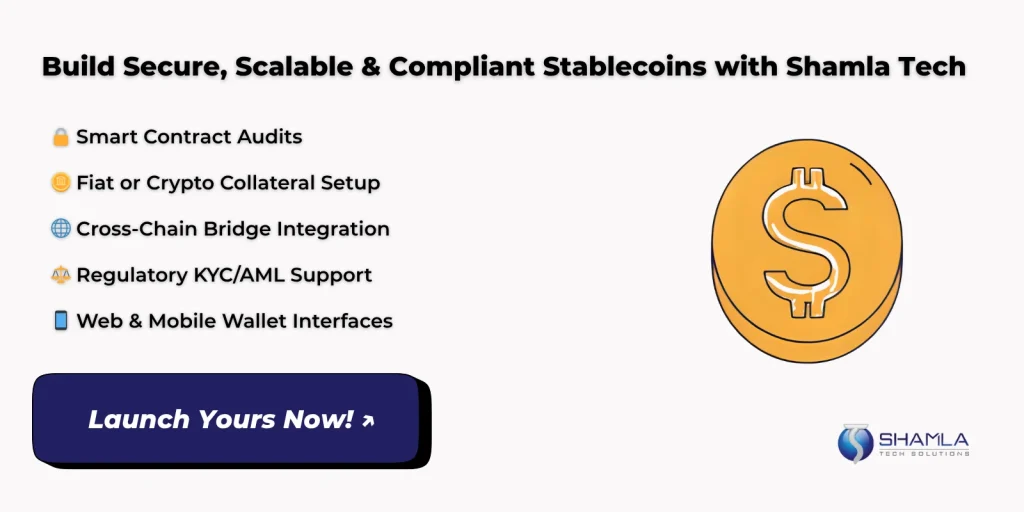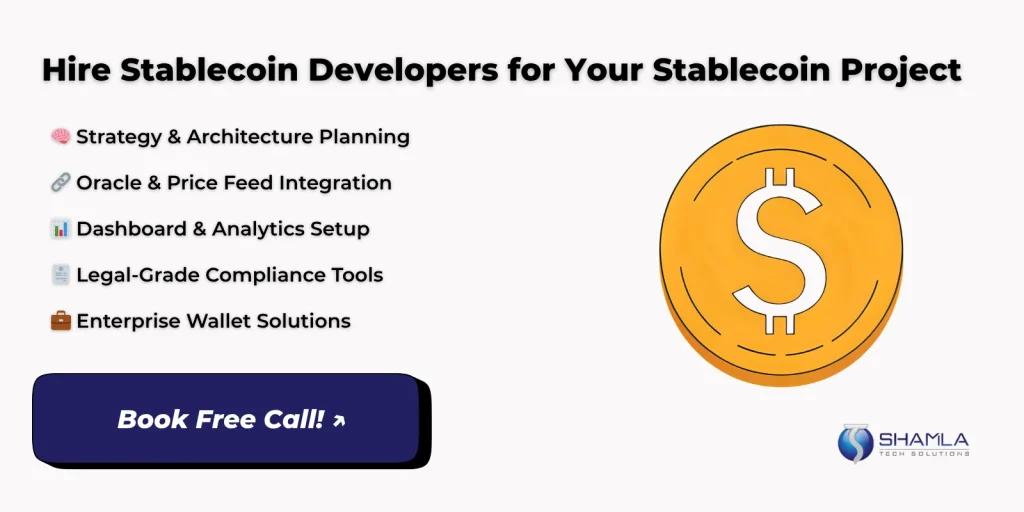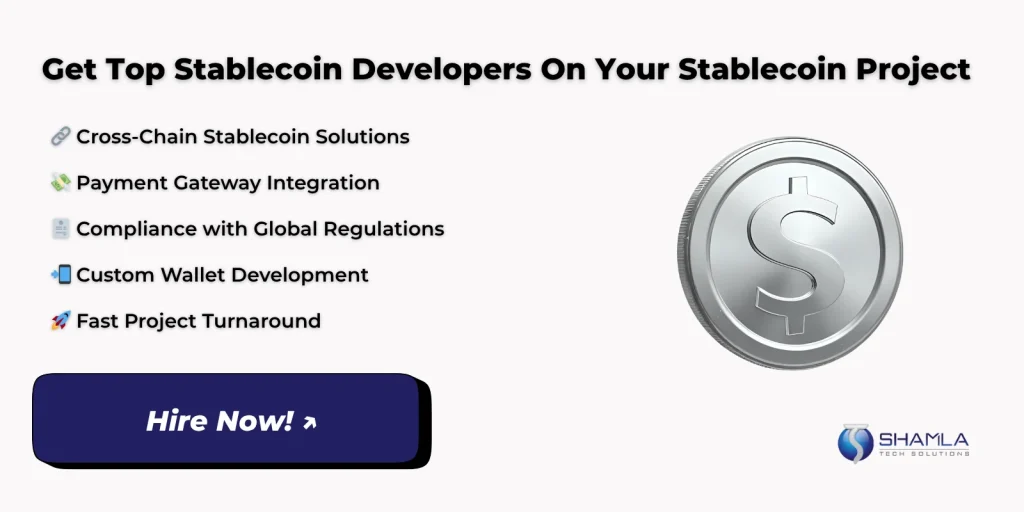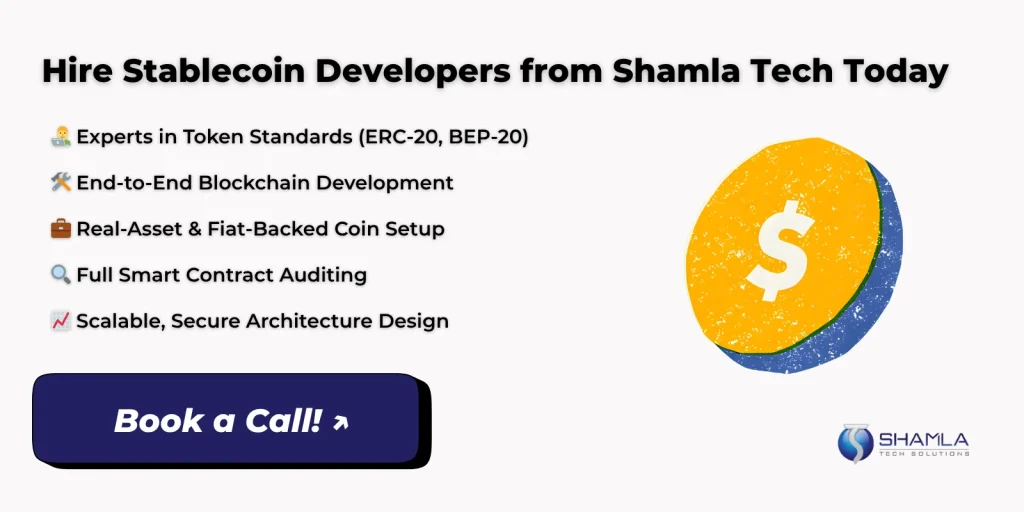Why You Need to Hire Stablecoin Developers

1. Deep Coding Expertise
2. Strong Security and Audit Routines
3. Smooth Regulatory Fit
4. Easy Scaling and Integration
5. Tailored Token Models
6. Faster Launch and Adoption
What to Expect from Stablecoin Blockchain Developers
1. Key Roles and Skills
2. Core Tech Stack
3. Backend and Frontend Expectations
When you hire stablecoin developers, you need a clear division between backend services and user interfaces. Backend teams build APIs that connect to smart contracts, handle transaction queues, and sync database records. They set up PostgreSQL or MongoDB for audit logs and user wallets. Front-end engineers use React or Vue to create dashboards for issuing, burning, and tracking token supply. They integrate Web3 libraries so users can connect MetaMask or WalletConnect. The best stablecoin developers to hire will deliver clean code, responsive layouts, and error handling so users see real‑time balances and transaction statuses.
4. Security, KYC/AML, and Wallet Integration
5. Regulatory Alignment
6. Budget and Cost Planning
7. DeFi Integration and Use Cases
How to Hire the Best Stablecoin Developers
1. Choose the Right Partner
2. Check Blockchain Expertise
3. Assess Service Offerings
4. Define Your Project Scope
5. Compare In‑House vs Agency
6. Look for Key Skills
7. Final Screening and Onboarding
Kickstart Your Stablecoin Development Project with Shamla Tech
1. Defining Your Stablecoin Project
2. Assembling Expert Teams
3. Crafting a Scalable Architecture
4. Building and Testing Smart Contracts
5. Ensuring Security and Compliance
6. Integrating Wallets and Interfaces
7. Launch Support and Upgrades
Conclusion
Bringing on the right team to hire stablecoin developers ensures your token runs safely, follows rules, and grows with demand. A skilled stablecoin development company lays down clear contract patterns, audit routines, and oracle feeds that keep value steady.
By choosing expert stablecoin development services, you get end‑to‑end support, from KYC integration to multisig controls and DeFi links. Don’t leave critical layers to chance: vet teams for hands‑on token launches, fast issue fixes, and smooth network upgrades. Act now to lock in top talent and keep your project competitive.
Want to build your own stablecoin with full control and security?
Contact us now to kickstart your Stablecoin project with Shamla Tech!







